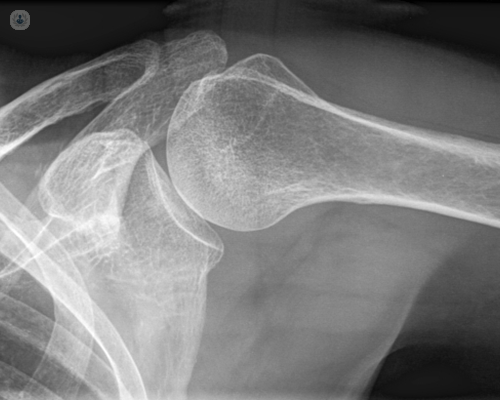
Shoulder arthroscopy: risks and recovery
Shoulder arthroscopy is a diagnostic and therapeutic surgical technique for lesions that affect the shoulder joint. As it is a semi-invasive technique with small incisions made in the skin, a shoulder arthroscopy requires the orthopaedician to have the right anatomical knowledge in order not to injure nerve or vascular structures.

A cannula system approximately 0.4 cm in diameter is used to house an optical chamber known as an arthroscope. This arthroscope is aided by a cold light source so as not to injure the tissues to be treated. Its images are projected on a monitor from which all the surgical gestures are controlled.
Who needs a shoulder arthroscopy?
This surgical technique is recommended for all those patients who, due to the severity of the injury, require it urgently or, also, those in whom conservative or rehabilitative treatment has failed. Shoulder arthroscopy can be suitable for patients with nocturnal pain, which prevents habitual rest or who present functional impotence of the limb in regular daily life activities such as dressing, cleaning, driving and performing low level sport, among others.
It can also be used to treat recurrent shoulder instability, rotator cuff rupture; biceps slap injury, calcium tendinitis, subacromial conflict, AC arthropathy, AC dislocation, adhesive capsulitis, chondrocalcinosis, or rheumatoid arthritis.
What are the risks of shoulder arthroscopy?
The risks and complications that shoulder arthroscopy can entail can be classified into three categories:
• Anaesthetics: Evaluated by the anaesthesia specialists to decide the best method of anaesthesia, depending on the complexity and duration of the surgery.
• Pre-operative: The surgeon must have the appropriate knowledge and skills to avoid and solve complications during shoulder arthroscopy surgery.
• Postoperative: Postoperative complications after a shoulder arthroscopy are similar to those of any joint surgery. For example: infection, which is very rare in arthroscopic surgery; and, joint stiffness or residual pain. For the latter, a pattern of appropriate exercises is very important and is to be performed immediately after discharge from hospital.
Shoulder Arthroscopy: Recovery
The recovery from a shoulder arthroscopy depends on the lesions to be treated and the activity to be performed by the patient; accordingly it differs for each individual patient.
The recovery period varies from one to two weeks in surgeries without cuff injuries, and up to two and three months if the rotator cuff has been repaired. For sportsmen who do throwing sports or contact sport it can be a period of 4 to 6 months.
Once the stitches are removed, all patients can perform activities such as eating or washing themselves after seven or ten days despite wearing an immobilizer bandage. For more information on shoulder arthroscopies, get in touch with a specialist.

